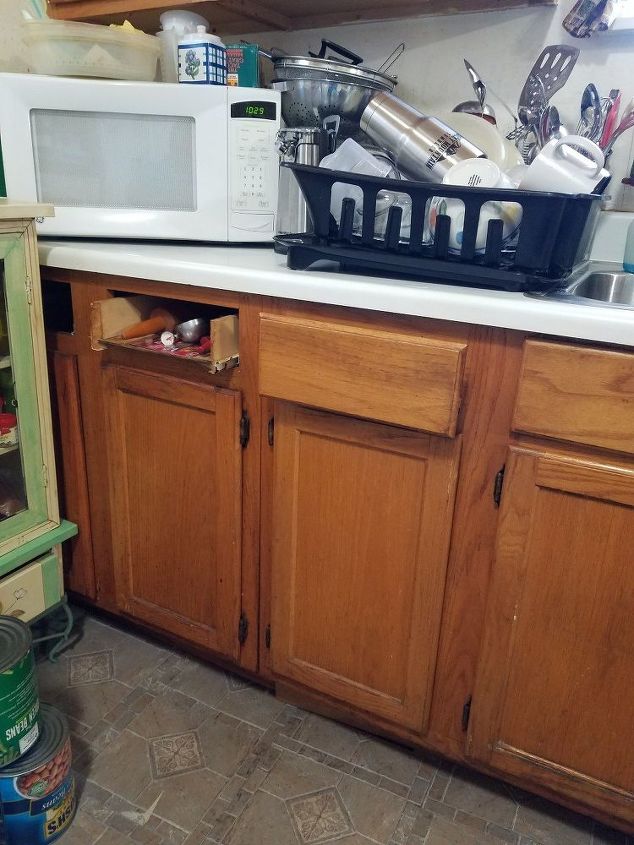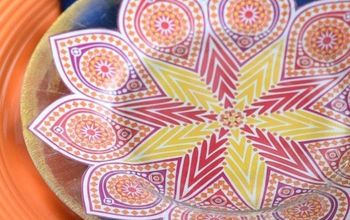How can you tell if a pallet is usable?
-
I've done A LOT with pallets. I even have whole ones on my wall. Like you I get them free. The more worn the better! I do a good visual inspection first. Then as I'm cutting the boards apart I'm watching for anything and everything. To this day I've never had any issue whatsoever. Sorry j couldn't be more helpful. Have fun with them!
 Jaxon
on Jan 12, 2015
Helpful Reply
Jaxon
on Jan 12, 2015
Helpful Reply -
-
I was told that the type of wood has a lot to do with it being usable for project's.Some of them the wood is to hard to drive nail's or to put screw's in.
 Jacki Nino
on Jan 12, 2015
Helpful Reply
Jacki Nino
on Jan 12, 2015
Helpful Reply -
-
Thanks, do you find them fairly easy to work with? I live in a small apartment and after some research I think I'm going to put this idea on hold since I don't think I have the space or tools to work with. But if there were a way to simplify or use the pallets without taking them apart (maybe for a coffee table or tv stand) I think it would be neat...but I don't know if paint and stacking a couple will look any good
 Julie
on Jan 12, 2015
Helpful Reply
Julie
on Jan 12, 2015
Helpful Reply -
-
I have been building pallet projects for over a year now/selling them etc. Pallets can be a pain to take apart without the proper tools. A good crowbar..short one because the longer ones are (sorry ladies) too hard for most women to handle. A good screwdriver...big to get in places the crowbar can't, a hammer and if all else fails a good reciprocating saw. Some pallets get damage when trying to pull out the nails since they usually use very long very sturdy nails to hold them together. I have actually cut some pallets right at the edge and left the outside part on so you only have to remove the middle nails simply because it's easier but I like the looks of the nail holes so usually I persevere or if all else fails, whine to your hubby and get him to take them apart. Once apart I have never seen any bug damage etc but do look for good clean pallets. They sand down beautifully and also stain well.
 Glenna Kennedy
on Jan 12, 2015
Helpful Reply
Glenna Kennedy
on Jan 12, 2015
Helpful Reply -
-
I have used them to build a couch for my dogs!
 Kim Rocheleau
on Jan 12, 2015
Helpful Reply
Kim Rocheleau
on Jan 12, 2015
Helpful Reply -
-
Taken from 1001 Pallets.com:How to tell if a pallet is safe for reuse ? With an estimated 2 billion pallets being used every day, and many more sitting around, no wonder so many projects have been done using pallets. Here we present you 1001 ways to recycle, upcycle, reuse or repurpose pallets ! But many of you have questions about pallet’s safety.We tried to summarize the information we found. The first issue is what has spilled on the pallet ! Be careful about oily pallets or the one that have clearly had something spilled on them.For the clean ones here is what we can tell you :WHEN THERE IS NO STAMP OR MARK ON THE PALLET ?It means that it’s a “national pallet” that is used for domestic transport (wherever you are located) ! Most of them are not treated with chemicals, so can be totally safe. But you may still be careful. I know people who use these pallets safely but it’s better if you can trace where they come from.FOR INTERNATIONAL PALLETS :<img class="aligncenter size-full wp-image-3698" src="http://1-ps.googleusercontent.com/hk/4kNtWpInweUxXp1NqITk6QtPZL/www.1001pallets.com/wp-content/uploads/2013/06/520x300xIPPC-logo.jpg.pagespeed.ic.NF0WVs5g_Ue8ubqFLcZV.jpg" alt="IPPC-logo" width="520" height="300"/>There are 2 main things to watch for on the stamp :The IPPC Logo: if you don’t see it, don’t use it ! Even if a pallet may be perfectly safe without this logo it could also mean that it was treated with chemicals !The treatment code : HT =Heat treatment / MB =Methyl Bromide / DB = Debarked.HT : wooden pallets manufactured in Canada or the US undergo a pest control treatment called heat treating (HT) which involves heating the pallet to minimum core temperature of 56°C for softwoods and 60°C for hardwoods for a minimum of 30 minutes in a kiln. HT pallets are not harmful to your health.MB : methyl-bromide fumigation. This type of treatment is banned in Canada because it poses a health risk to workers handling the pallets. you can still find it in some countries. If you find a MB pallet, please do not use it for your craft projects or as firewood, find a waste-removal company who can dispose of it properly.<img class="aligncenter size-large wp-image-3700" src="http://1-ps.googleusercontent.com/hk/4kNtWpInweUxXp1NqITk6QtPZL/www.1001pallets.com/wp-content/uploads/2013/06/580x435xippc-600x450.jpg.pagespeed.ic.nKAo8_PCKLLJMIVEUiOh.jpg" alt="ippc" width="580" height="435"/> FOR EUROPE :<img class="aligncenter size-large wp-image-3701" src="http://1-ps.googleusercontent.com/hk/4kNtWpInweUxXp1NqITk6QtPZL/www.1001pallets.com/wp-content/uploads/2013/06/580x477xippc-eur-epal-600x494.jpg.pagespeed.ic.GP92UnuNcUkKfGBcshRs.jpg" alt="ippc-eur-epal" width="580" height="477"/>It’s basically the same thing but sometimes there are no other stamp than EPAL or EUR. you should choose the one with EPAL. The one marked with EUR comes from an old system managed by railways companies. If they are EPAL approved too, then it’s ok ! They are just heat treated (HT) the same way as described above. Europe does not allow chemical treatments. They are able to carry 1500kg.You may find also pallets without any sign. They are made to be used a single time. The most robust are the one used for buiding materials (bricks, cement, etc.). They are not treated with chemicals and can be easily reused. Many people ask as where to find pallets ! You may go to your nearest DIY store (or materials store).WHAT ABOUT COLORED PALLETS ?Pallets usually last 4 to 5 years. 8 to 10 when they are the property of a renting company. Colored pallets are usually from these companies.<img class="aligncenter size-large wp-image-3702" src="http://1-ps.googleusercontent.com/hk/4kNtWpInweUxXp1NqITk6QtPZL/www.1001pallets.com/wp-content/uploads/2013/06/580x433xippc-red-blue-600x448.jpg.pagespeed.ic.qQrbfeLPaDfi_RKqf_6k.jpg" alt="ippc-red-blue" width="580" height="433"/>- Red pallets : pool LPR, – Blue pallets : pool CHEP, – Brown pallets : pool IPP.I do not advise tu use them specially for indoor use. You may find traces of formaldehyde and other resins used in the composite blocks.That’s it, now you have all the necessary information to start you pallet quest ! If you have more informations, please add comments and links !
 Jennifer
on Jan 13, 2015
Helpful Reply
Jennifer
on Jan 13, 2015
Helpful Reply -
-
And look for the HT stamp, which tells you it was heat treated rather than chemically treated-especially important if you are using the wood indoors or around kids and pets.
 Dee
on Feb 02, 2015
Helpful Reply
Dee
on Feb 02, 2015
Helpful Reply -
-
I guess Dee might have answered my question. I have heard that some of the pallets have been treated with a chemical that can be harmful if used. Does anyone else have information besides the HT stamp? thanks!
 JoAnn
on Feb 08, 2015
Helpful Reply
JoAnn
on Feb 08, 2015
Helpful Reply -
Related Discussions
How can I use pallets to make kitchen cabinets?
My home was rehab by the federal government over 20 years ago. Like kitchen cabinets doors are falling apart and the front of the drawers have came off because wear a... See more
How can I use pallets as acoustic panels?
What could you line the inside of pallets with to create your own acoustic panels?
Can you use snap vinyl plank flooring to walls?
We have left over flooring and I am wondering if if can be used as a backsplash of sorts. It’s not the peel and stick kind, it’s the snap and lock kind.
Can you use remnant carpet (carpet leftovers) as a rug - scratch wood?
We just installed carpet in our bedrooms and a couple of pieces are large enough to use in the living area with couches and thought to use that instead of buying a la... See more
What can you do with plastic pallets
I have 3 by 4 pallets and was wondering is there something you can do



